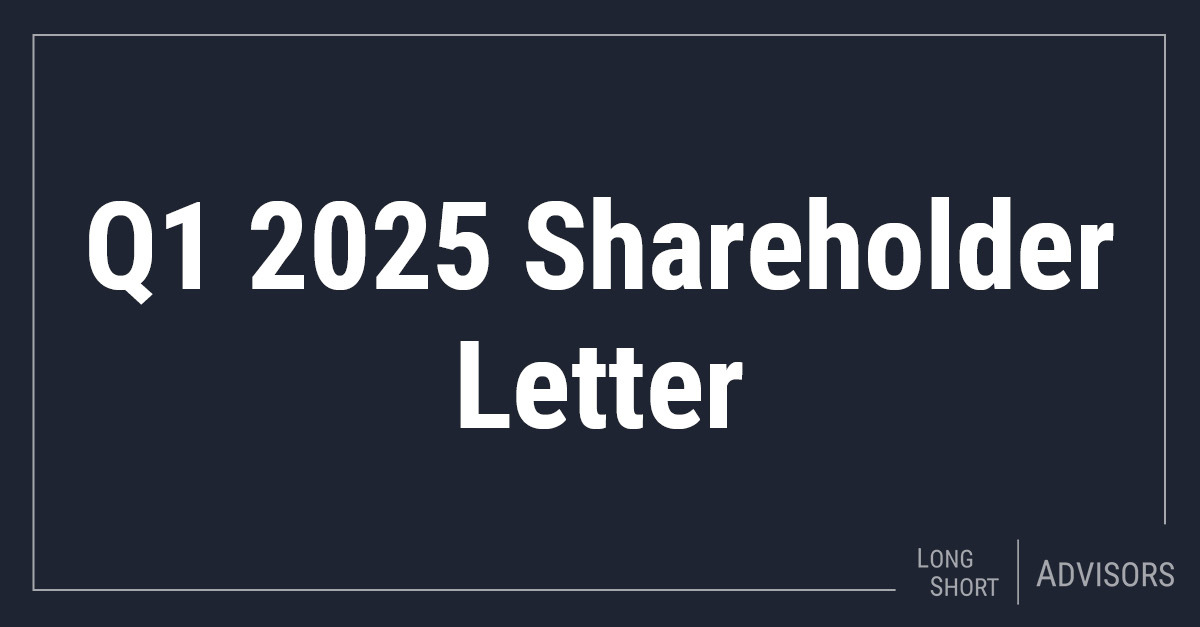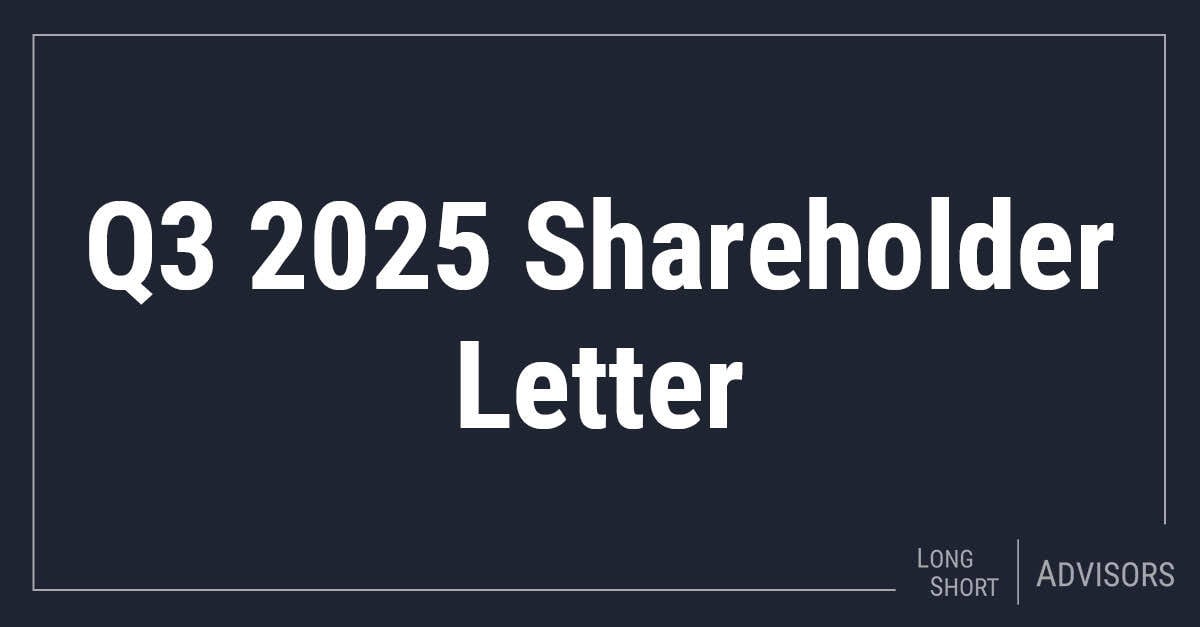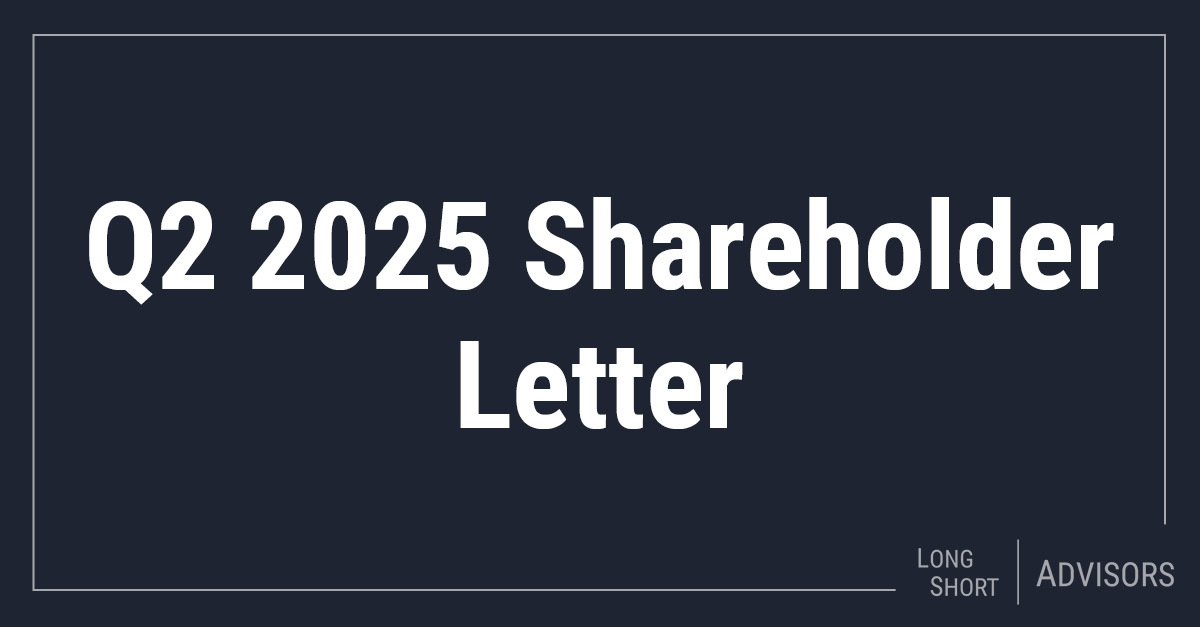Current Market Environment
"Elections have consequences.“
This axiom has never rung truer on Wall Street than it has in recent months. Indeed, we can't remember a time in our careers when Washington D.C. had more of an impact on the stock market. Since inauguration day on January 20, an unrelenting barrage of policy proposals, executive orders, and other actions by the “Trump 2.0” administration has led to extreme volatility on a daily, and even hourly basis. These initial actions have thus far overshadowed the administration’s pro-business and consumer actions yet to come in the form of significant deregulation, tax cuts and what should be a more favorable environment for mergers & acquisitions.
While the year started on a relatively positive note, with the S&P 500 hitting a record in February, the market's mood soured as the new administration's initial actions raised concerns over a slowing economy and rekindled inflation. For example, Elon Musk's Department of Government Efficiency (DOGE) got off to a fast start with a federal workforce reduction program, proposing to cut: 50% of the IRS workforce, or up to 45,000 jobs; 80,000 employees from the Department of Veterans Affairs; 50% of the Department of Education; 65% of the environmental protection Agency's budget…and more. According to Challenger, Gray & Christmas, Inc. (whose “Challenger data” is often used by economists) job cuts through March 31 reached almost 500,000, the highest quarterly rate since 2009, with the government contributing over 279,000 to the total. While these DOGE cuts caused some consternation over the potential for decreased government spending and the overall jobs picture, more concerning were the potential ramifications from a trade war which quickly heated up during the quarter.
The metaphorical first shots were fired in late January, when the President announced 25% tariffs on Canada and Mexico. This was followed by additional tariffs on Chinese imports above pre-existing levels, as well as a Presidential Memorandum ordering a review of “non-reciprocal trade practices.” Threats of reciprocal actions by three of our largest trading partners, in addition to what additional actions against other countries might come from the ongoing review, added to investor nervousness surrounding the burgeoning trade war. Fears of rekindled inflation as a byproduct of a trade war, as well as the potential for a global economic slowdown, also fueled the selloff. Ominously, the much-feared term "stagflation" was increasingly being used in print and television media as the quarter progressed.

These fears only got worse following quarter’s end, when on April 2, which the President dubbed "Liberation Day," the administration announced a 10% global tariff on all imports with higher rates for 57 specific countries. With the announcement being more draconian than expected, the S&P 500 fell more than 10% in the three days following, and volatility has continued as the tariff "goal posts" continue to be moved on a day-to-day basis (modifications, carve-outs, additional tariffs, and delays have made the situation extremely fluid). As of this writing, President Trump has postponed many of the tariffs for a 90 day negotiation period while maintaining a 145% tariff rate on China, the world’s second largest economy.
Whether these tariff announcements will ultimately be used as a negotiation tactic by the administration or will be made permanent, we don't purport to know (likely a combination of both). What we are more certain of, however, from our conversations with company management teams and what we are hearing on quarterly earnings calls, is that uncertainty is already having negative ramifications for the economy. It is understandably very difficult for companies to enter into major contracts and make long-term plans in this environment. Hard to estimate is also the impact from “badwill” being created with our trading partners. For example, reports and data suggest Canadians are canceling trips to the States, as well as boycotting U.S. products in the wake of the tariffs and President Trump’s continued suggestion Canada should become a U.S. state.
All of this, including the stock market's recent plunge, has greatly reduced consumer confidence, which saw the March reading fall to its second lowest level on record. Warning signs can also be seen in high- yield spreads which, prior to the tariff announcements, were trading near record lows but have spiked since.
 While we are fond of the maxim, "Now is always the most difficult time to invest," it would be dishonest to not acknowledge that recent months have felt especially difficult. However, Prospector has navigated difficult waters many times before. Given the recent turbulence, now seems an appropriate time to reiterate our modus operandi during times of market distress.
While we are fond of the maxim, "Now is always the most difficult time to invest," it would be dishonest to not acknowledge that recent months have felt especially difficult. However, Prospector has navigated difficult waters many times before. Given the recent turbulence, now seems an appropriate time to reiterate our modus operandi during times of market distress.
Our Stock Market Distress Playbook
Throughout the 28-year history of Prospector Partners, we have experienced a number of significant equity market sell offs. These include the burst of the internet bubble in 2000, the Great Financial Crisis of 2008, and the COVID-19 related swoon. During these periods of distress, we return to a few key strategic portfolio management actions:
- First, we upgrade the quality of the balance sheets in your portfolio. As you are aware, we are chronically “allergic” to leverage and debt in our positions. That said, there is always room for improvement when the music stops, and a market crisis erupts. Generally, this re-underwriting process leads us to hold larger balance sheets with more staying power.
- Second, we typically reduce the gross and net exposure in the portfolio to reduce overall risk during the heightened uncertainty. While we came into the year with gross and net exposure at modest levels, net exposure has been lowered by roughly 5%, to 55% at the time of this writing.
- We reduce cyclicality in the portfolio at the margin. Again, you are aware that we chronically are underweight cyclical sectors of the market such as materials, technology, and consumer discretionary. This time is no different. We also fortuitously took advantage of opportunities within non-cyclical sectors like consumer staples, healthcare and defense during the DOGE and RFK, Jr.-related selloff in late-2024 and early-2025 (discussed in our last quarterly letter). This has helped provide additional comfort in our gross and net positioning mentioned above.
- Finally, we actively and aggressively manage our tax position. We are loathe to deliver a taxable gain at the same time as a total return loss to our customers. Recall that a significant portion of the assets in the Prospector Partners Fund strategy is internal money. As such we pay close attention to potentially maximizing after-tax returns for our clients.
Trade War - Portfolio Implications
As mentioned above, investing during turbulent times such as these is extremely difficult. However, active portfolio management is crucial. Not only because passive indices like the S&P 500 continue to be heavily weighted towards high-valued, mega-cap technology and communication services companies which derive a considerable portion of their revenues from overseas and thus are at risk to the trade war, but also because volatility creates opportunities. We consistently strive to take advantage of the opportunities created by this volatility.

Much uncertainty remains as to the ultimate impact of the trade war, and we have not made wholesale changes to the portfolio. We remain comfortable with our underweight position within technology and communication services given still lofty valuations, and the aforementioned exposure to global trade. We are also comfortable with our overweight to the insurance sector given they have relatively low exposure to tariffs, benefit from higher interest rates and, in the case of property-casualty insurers, can take advantage of inflation via higher premiums. Within banks, we have reduced net exposure somewhat and become even more conscious of loan portfolio strength given the potential for an economic slowdown, striving to upgrade the quality of your bank holdings from an already solid positioning. We also continue looking for opportunities to upgrade other areas of the portfolio. Whether swapping one investment in a sector with a similar company possessing a stronger balance sheet, or finding opportunities to increase exposure to long-term favorable secular trends (like healthier-for-you ingredients in a GLP-1 world), rest assured we are working harder than ever to maximize risk-adjusted returns and of course, always looking to mitigate downside risk.
Steadfast, we remain committed to making you money while aiming to protect your wealth.








